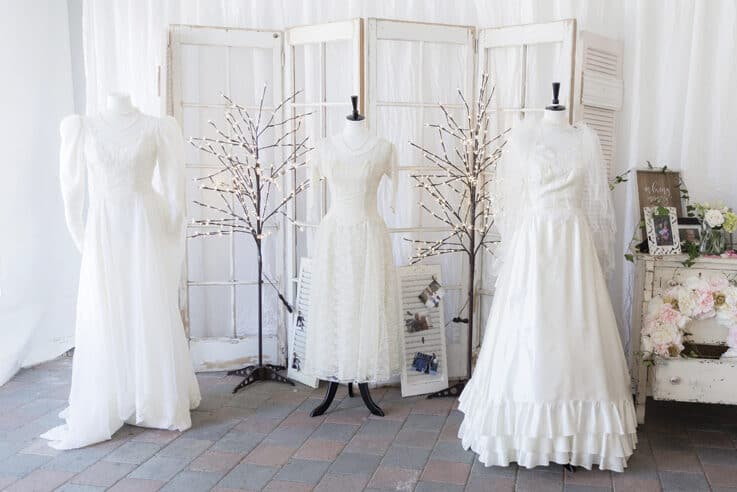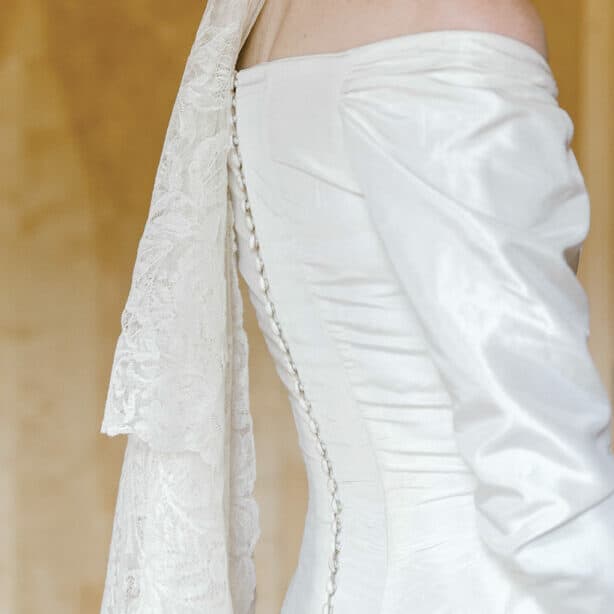TREASURED KEEPSAKE
Safeguarding your wedding dress

You spent hours trying on countless gowns before finding the perfect dress for your big day. Now that your wedding is over, what should you do with likely the most expensive piece of clothing you’ve ever purchased?
Whether a wedding dress is a vintage hand-me-down or a brand-new gown by a famous designer, planning for its proper cleaning and preservation will ensure it remains a treasured keepsake for generations to come. Perhaps some day your daughter or granddaughter will want to wear it on her special day.
Here’s some advice from wedding-dress experts:
Don’t Delay
Have your wedding dress cleaned and preserved as soon as possible. Why the rush? Stains left untreated can damage the gown’s fabric. Sugar spots can dry without leaving a noticeable mark but will caramelize and turn brown over time without proper handling. Salt from perspiration can cause a dress’ lining to eventually become brittle. Most dry-cleaning solutions do not remove sugar or salt without pretreatment. Be sure to review the actual condition of your dress with your dry-cleaning professional.

Look For Experience
One of the best ways to locate a reputable wedding dress-cleaning and -preservation professional is to ask the staff at the store where you bought it. Bridal shops frequently send gowns out for cleaning and pressing, so their recommendations are useful. Get references from more than one place if possible, and do some research on your own. Make sure the professional specializes in wedding dresses regardless of whether they perform the work on premise or send it to a wholesale cleaner.
Find out what types of cleaning methods are used and make sure they correspond with the care label in your dress. Some fabric and detail work—like sequins and beads—will require special cleaning methods. Find out if fresh solvents will be used to clean your dress. This is a must; dirty solvents can transfer impurities to your dress during the cleaning process, leaving your gown smelling like cleaning solvent.
Decide whether to Seal, Box, or Bag
Once your dress has been professionally cleaned, decide which preservation method best suits your needs. The three main types of preservation—sealing, boxing, and bagging—employ a variety of methods to help protect your dress from oxidation, yellowing, mold and mildew, light, dust, and permanent creasing.
Sealing involves packaging a gown using acid-free tissue sealed tight in an acid-free box. However, this method does not allow for future inspection to catch any oxidation, yellowing, or creasing issues; can cause permanent creasing, since the dress won’t be refolded every few years; and increases the chances of mildew, since the dress cannot breathe.
Boxing is similar to sealing except the box is not sealed, which allows for inspection, future refolding, and air circulation. Sealing and boxing methods appeal to brides with either a large dress or a small closet.
Bagging employs a technique used by museums to preserve historical clothing. The dress is hung on a padded hanger and enclosed in a 100 percent acid-free cotton bag. It remains unfolded, so permanent creasing is avoided. Bagged dresses are easy to inspect and need very little, if any, maintenance. The only drawback is a bagged dress can require a fair amount of storage space.
Store it Carefully
Find a safe, dry, and dark location with little temperature fluctuation to store your clean and preserved dress. Regardless of which preservation method you choose, never store your dress in an attic or basement. Even preserved dresses require a space with minimal temperature and humidity changes. And do not use a plastic garment bag, as plastic fumes can cause the garment to yellow.
